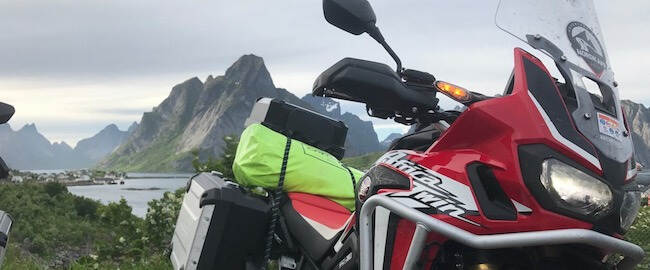Planning what to pack and take with you on a motorcycle touring trip can be a stressful experience. We’ve all been there, where everything is booked, tickets for the ferries are sorted, you’ve checked your motorcycle insurance covers you for riding in Europe, your bike is gleaming and full of fuel, and you’ve arranged a meeting time to start your biking holiday or epic adventure.
But, what exactly do you pack on your next big motorcycle trip?
Thankfully Insidebikes is here to help with some of the essentials if you’re going on a big motorcycle touring holiday. Fresh from a 10-day touring trip from Oslo to The North Cape in Norway on a Honda CRF1000L Africa Twin, experienced motorcycle journalist Marc Potter gives his top kit list for a big trip. But whatever you ride, from a sports bike, to a touring motorcycle, this kit list will help you prep and pack.
RIDING KIT:
Your most comfortable helmet – You’re going to be living in this, so don’t take a lid that you can’t ride in for at least eight hours a day without any parts of it pushing into your brain.
A clear visor – Sounds obvious, but make sure you pack a clear visor for riding in the rain or at night. Even better, fit a Pinlock anti-mist visor insert for when riding in the cold or rain, to stop your visor fogging up.
A dark visor – Check the rules of the country you’re riding in, but if you’re riding in summer or low winter sun, a black visor stops you squinting and can improve vision in certain lights. There’s a reason every racer in the world uses them, and it’s not just to look cool.
Sunglasses – If you’re not into black visors, then use sunglasses when you’re riding in the daytime, and take them off at night. Or look for one of the popular touring helmets like Shoei’s GT-Air which features an internal black visor for when it’s sunny.
Summer gloves – You don’t want to be hot and sweaty when riding, so pack a pair of well-worn and trusted summer gloves for when the temperature rises. Vented gloves are even better if the weather gets scorchio.
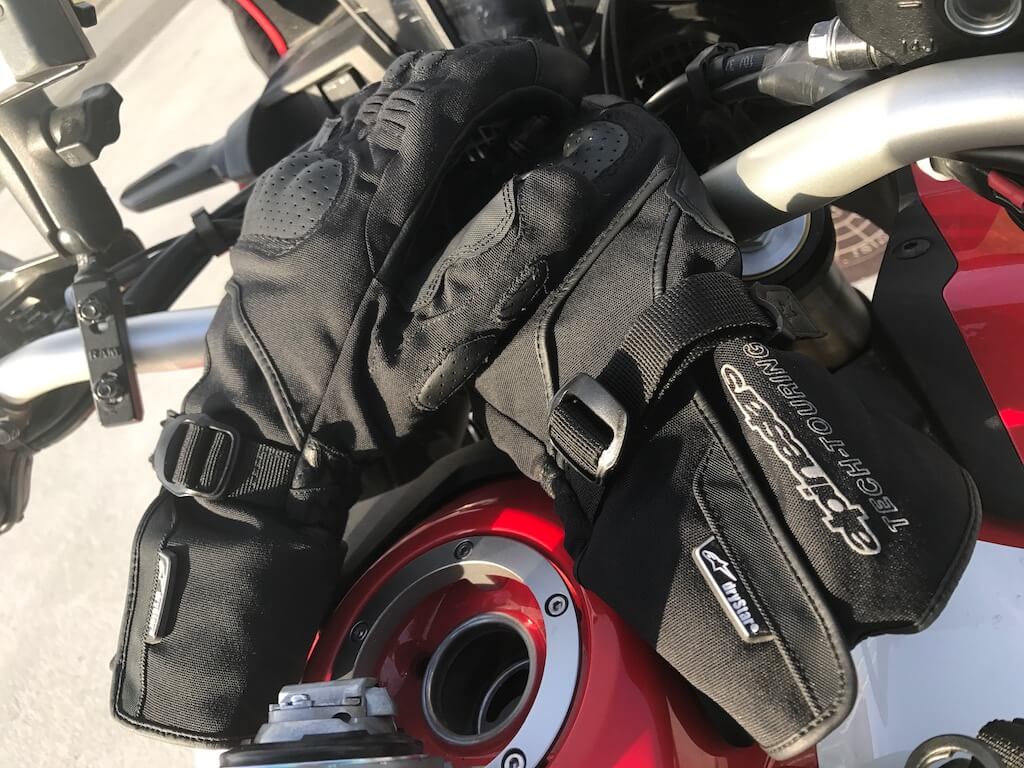
Waterproof textile clothing – Everyone has their own preference, but if we’re doing a big trip then we’d choose textile riding kit every time. Find one that is waterproof and breathable, and with ventilation zips for when it’s hot, like the Alpinestars Yokohama jacket and pants. It’s expensive but brilliant and trustworthy when it’s hot or cold, with internal layers to take in or out.
Waterproof winter gloves – You can predict most things on a big European motorcycle trip, but not the weather, so dress for all conditions and you won’t go wrong. A glove like the Alpinestars Apex Drystar gloves is my preferred choice, they’re warm, waterproof, but not too bulky, so they still give plenty of feel on the bike.
Heated grips – If where you’re going may be cold, heated grips can make the difference between a good day riding, or a miserable, cold one.
Wind breaker fleece or gilet – Layer up under your suit. Lots of thin layers you can take on or off are better than one big layer. Outdoor clothing shops like Blacks and The Mountain Warehouse are great for picking up cheap technical clothing designed for mountain use, but brilliant on motorcycles.
Rain suit – Even though your textile suit may be waterproof, a two-piece rain suit will provide an extra layer of wind and water protection for when it really rains hard, or the wind turns icy cold.
Waterproof boots – If you’re going to take one pair of boots make sure they’re waterproof, that way you don’t have to change them when it rains. And it will rain! Failing that, take plastic bags and wear them inside your boots if your footwear isn’t waterproof.
Warm socks – We recommend Merino wool walking socks as they wick sweat when it’s warm, and are incredibly warm when it’s cold. Oxford Products thermal socks are good, but we’d recommend a mountaineering shop like Blacks or The Mountain Warehouse for budget priced, but great quality socks.
Yellow reflective safety jacket – Safety first, of course, and useful if you break down. Check your destination country’s rules and regulations on where you’re headed in France, for example, it’s compulsory. https://www.theaa.com/european-breakdown-cover/driving-in-europe
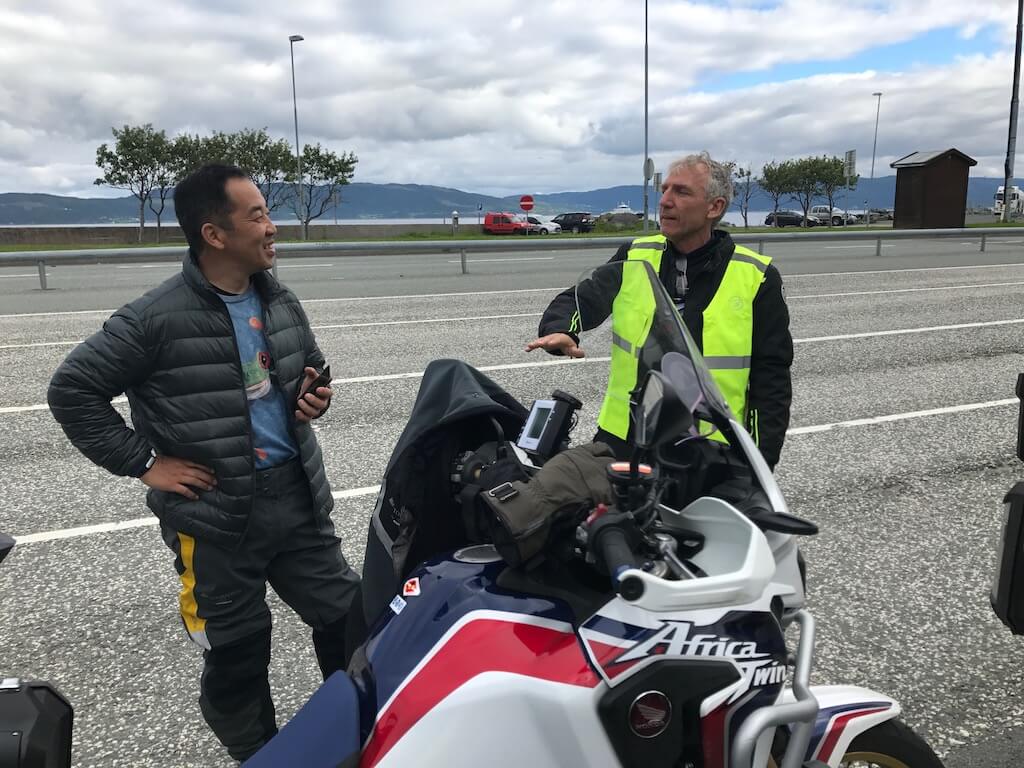
ELECTRONIC DEVICES:
Smartphone – Use it as a camera, a portable communication device, and for if something goes wrong. Make sure you know the number of the emergency services where you’re headed, and store it in your phone.
Battery charger/spare battery – There are tons of power packs available that will give your phone a top up, or, if your bike has a 12v charger socket, buy a USB charger to plug in and a cable that you can run to your phone charger to your tank bag. Loosely zip tie the cable to the handlebars so it doesn’t flap around too much.
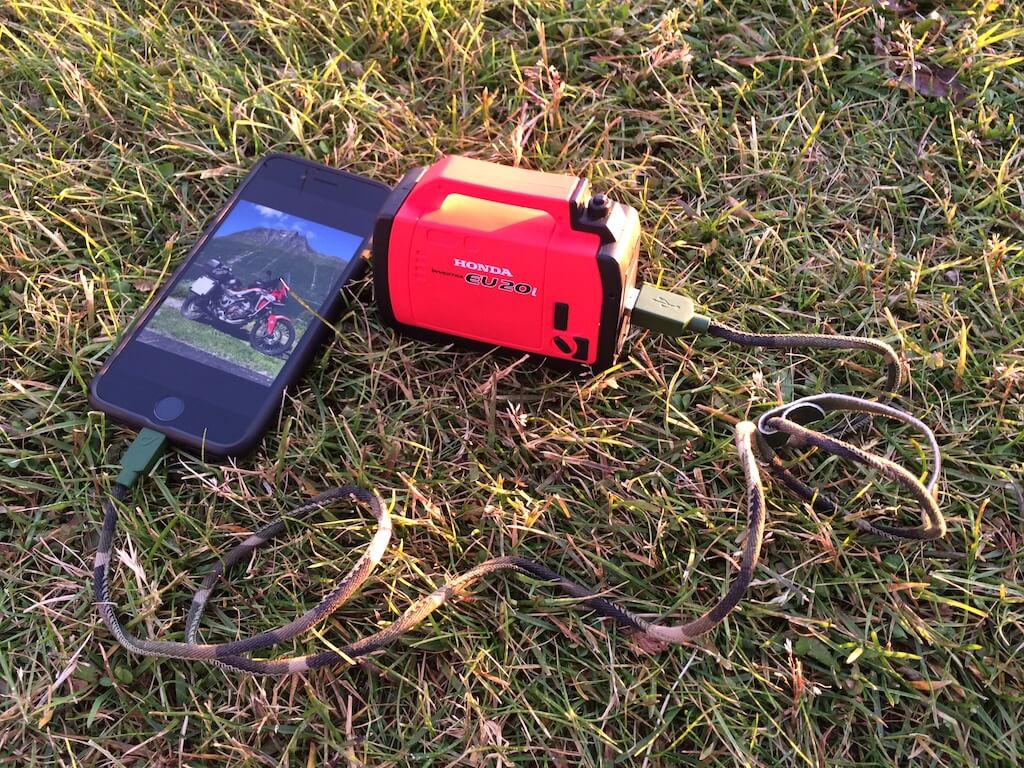
12v socket USB charger (where applicable) – See above
European plug adapter – Make sure you have the right plug adapter, available online or on the ferry, usually.
RIDER ACCESSORIES:
Tank bag – Genius for putting in essential documents, a bottle of water, spare gloves and camera.
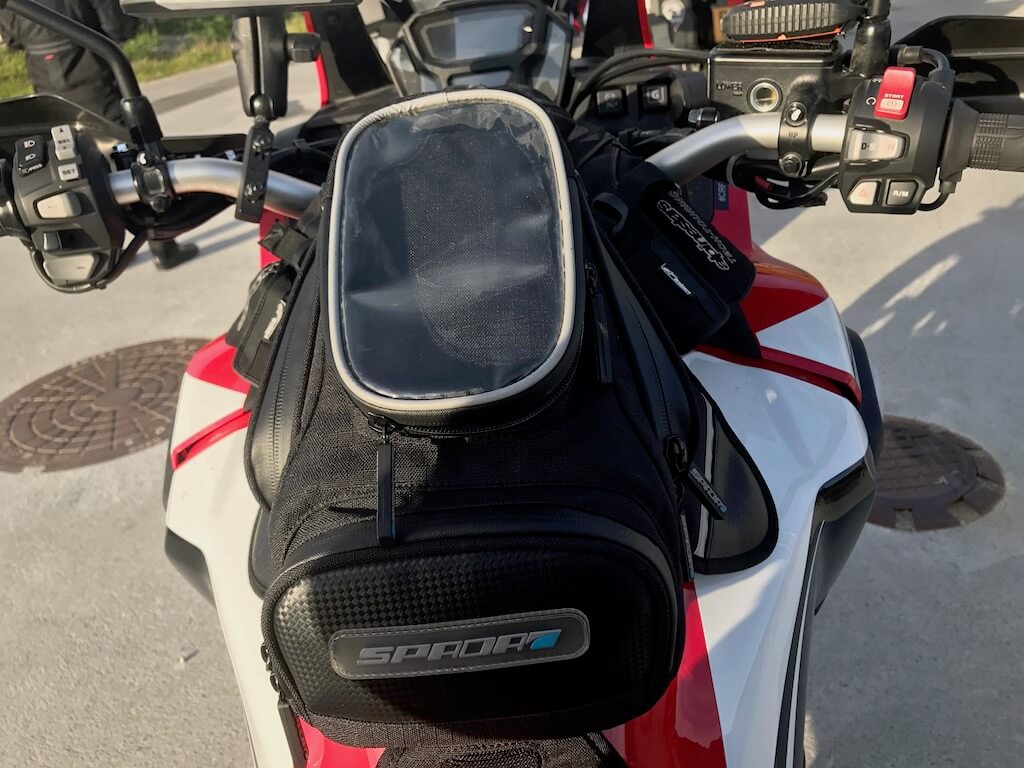
Tail pack – If you’ve not got a pillion, then tail packs keep the weight of your luggage centrally so the handling of the bike isn’t affected by the weight of the luggage too much. We’ve recently been impressed by Spada luggage and SW Motech kit.
Panniers – Hard or soft panniers are your choice. Hard are the preferred option, but if you use soft panniers, make sure they can’t drag in the wheel as that would cause a whole world of pain and ruin your touring holiday.
Rucksack – Preferably waterproof. Rucksacks are a great way of carrying more luggage without sticking more weight on your bike. We really rate the rucksacks from Kriega. They’re robust, designed for motorcycling and are mostly showerproof, depending on which one you buy.
Camelbak – If you’re riding somewhere hot then get yourself a Camelbak drinks bladder (or similar) and a rucksack that’s designed to take it so you can drink on the move.
Multifunctional knife – A Leatherman, a Swiss Army knife multi-tool, or similar, will help you on lots of occasions, from using it as a back-up screwdriver, or a handy extra pair of pliers, to catching your dinner.
Tools – Run around your bike and work out what the key tools are you need to take to cover off most eventualities. We’re thinking sockets, wrench, spanners and some Allen keys if anything becomes loose, or you need to adjust your chain.
Chain cleaner – Always clean your chain before lubing it, otherwise it just turns all the grit and grime on your chain into grinding paste, wearing out your chain quicker.
Chain lube – Most bike shops sell small cans for travelling. If you’re doing big miles, lube your chain daily to keep it running sweet.
Torch – Breakdown, or just can’t find your way back from the bar (after you’ve parked your bike, of course), a torch is always handy.
Credit card/cash – Grab some local currency for buying drinks and snacks away from major routes, and use a debit or credit card for fuelling up and tolls.
Passport – Yeah, you’ll need it. Don’t forget it.
Driving licence – Essential to ride with your licence in some countries.
Insurance documents – Motorcycle insurance documents are essential in some countries.
Paper map of where you’re headed – for when your phone or sat nav inevitably dies.
Sat nav – Some people like the old-fashioned method of sticking a piece of paper to the tank with way points on it, written in marker pen. But planning your route, downloading a .GPX file and then sticking it on your Tom Tom or Garmin is a much better way of making progress.
Zip lock bags – Available from most supermarkets, zip lock bags are great for using as a washbag or keeping your phone dry in the tank bag or in your chest pocket. Most so-called ‘waterproof’ pockets aren’t.
Carrier bags – If it rains a lot then sticking your kit in carrier bags is a good way of keeping them drier.
Cargo net – Use over luggage, and useful for any extra purchases or for strapping an extra layer too, a sleeping bag or similar.
Energy bars – Long rides take it out of you, bring fruit or energy bars to keep your calorie levels up and keep focussed.
Gaffer tape – From fixing a broken fairing or indicator, to strapping down luggage, sticking down a visor when your side pod decides to break, or fixing a broken handguard, industrial tape is always handy. Not to be confused with duct tape, which will leave a nasty residue when removed.
Bungee straps – Top strap down your luggage, and stick a water bottle underneath for easy access.
Zip ties – For fixing stuff, like a broken pannier lock, or keeping your bike together if it goes really bad!
Tie downs – Especially if you plan on taking a ferry. The shipping company should provide them to strap your bike down, but don’t bank on it. Better safe than sorry.
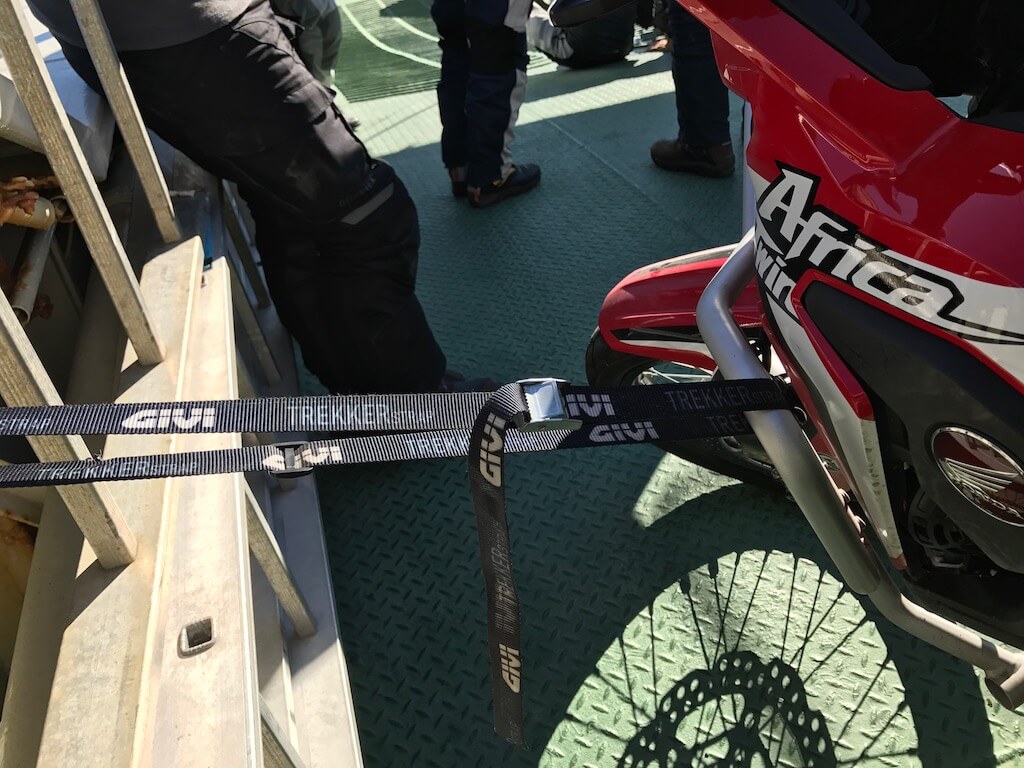
OTHER
T-shirts – yes, you need other clothes, and jeans, shorts etc. But you should know that. And pants, don’t forget pants. Flip flops – nothing like a flip-flop when you’ve been on a bike all day and want your feet to feel like they can breathe! All down to personal choice, and if your mates can handle the sight of your furry man toes.
Toilet paper – For when you’re caught short. You never know…
Toothbrush and toothpaste – Obvs.
Sleeping bag (if camping!)
Tent (if camping!)
Dry bags – Available online, or from walking and camping shops, dry sacks or dry bags are cheaper than most official pannier liners, and do what they say – keep your kit dry.
Plastic carrier bags – For dirty washing, or wearing on your feet when it rains.
Ear plugs – Save your hearing, wear soft foam ear plugs, and make sure you bring at least three pairs as they will get dirty, or you will drop/lose a pair.
Glasses/visor cleaner – Motul visor cleaner is brilliant, but we also recommend a glasses cleaning kit from Boots as it comes with a cleaning cloth and a small bottler of glasses cleaner, it’s small to tuck in your tank bag, but works just as well on visors as it does on glasses.
HEALTH AND SAFETY:
First Aid kit – For the bare essentials, from eye cleaner, plasters, mosquito stings etc.
Insurance documents and European breakdown cover – Make sure your bike is covered for riding in Europe, and has European breakdown cover, from Carole Nash, of course.
BUT MOST OF ALL:
A sense of adventure – Travelling on a motorcycle alone or with friends and having new experience is one of the most enlightening things you can do. Enjoy it, savour the experience, obey the speed limits, and most of all, ride safe.


